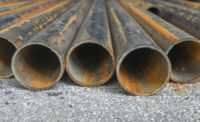William Shakespeare said, “Timing is everything,” back in 1599. Recently, ASHRAE announced its rebranding “Building Performance Analysis Conference” would be done at their June 2024 Annual Conference to ASHRAE “Conference for Integrated Design, Construction & Operations.” As far as timing, I have a book being published in 2024 titled, “Integrated Project Delivery for Building Infrastructure Opportunities.” This publication is directed specifically to HVAC Consulting firms and HVAC Contractor and Service firms working together and outlines a business plan to assist these two entities to team up and become the lead in pursuing HVAC infrastructure opportunities.
Historically, consulting engineering firms were subconsultants to architectural firms, and trade contractors were subcontractors to general contractors and construction managers — when it comes to design-bid-build (D-B-B) project delivery and construction management (CM) project delivery, that is. Design-build (D-B) is the third project delivery method I became in involved with in 1985 and is what I call the 20th century version of integrated project delivery (IPD), and it started in 1985. After working in D-B for years, I am an advocate for consultants and HVAC contractors to stop being considered sub to other firms when pursuing building infrastructure opportunities. They're the HVAC infrastructure experts and should lead, not follow. From this experience, herein is my abbreviated business plan outline.
A business plan
Unlike D-B-B and CM project delivery methods, IPD building infrastructure opportunities are “recession proof.” I've often said, “When boilers or chillers come to the end of their useful service life, or when they simply don’t work anymore, the equipment doesn’t care how the economy is doing that day.” Meanwhile, building programs for new construction, renovations, and building additions slow down significantly; building owners delay the funding of these projects and sometimes eliminate them when the economy takes a downturn.
Taking lead on engineering and construction infrastructure projects first requires a business plan that will be a challenge to create and implement in sync with more traditional business ventures. IPD of building infrastructure opportunities can be considered a boutique, niche business. The challenge will be a culture change for those who have been involved with D-B-B and CM project delivery methods of HVAC engineering and installation. People can be and often are creatures of habit and making a significant adjustment to how business is engineered and installed will not be for everyone.
Quality control tools is the cornerstone to the IPD strategic and tactical plans to build and continuously improve this business initiative. The foundation will be established based on the following:
- Breaking the mold when it comes to how projects are initiated and authorization to proceed.
- Drafting the business plan
- Putting it to paper and then marketing it in-house and to building owners and facility managers.
- Using an engineering estimating work order (EEWO) format.
- Identifying at least 18 building infrastructure HVAC opportunities.
Foundation building blocks
Infrastructure HVAC opportunities are, to some extent, repetitive from one facility to another. Standardization, the power of computer technology, and creativity in establishing the process and database that makes up each project opportunity will form the foundation to business plan success. The business plan process flow diagram is outlined below.
- Networking, marketing, and sales requirements
- Selecting individuals to accept change and fulfill the new job description requirements
- Establishing the EEWO sales menu
- Embracing “Time Management”
- The pre-proposal engineering concept package
- Team estimating
- Consensus rules
- Following the automobile brochure
- Maximizing estimating software database
- Standardized checklists
- Three-part equipment selection forms
- System flow diagrams, not contract drawings and specifications
- Proposal and authorization to proceed
- Closing out the job at the start
- Extended warranty
Based on my experience, not all are capable of accepting change, and, so, breaking the mold, the design phase (contract drawings and specifications), bid phase (competitive bidding of the job), authorization to proceed phase (competitive bidding of the subcontractors), construction phase (pre-construction, installation, startup, commissioning, and closeout) and one-year warranty phase can be avoided.
The IPD method business plan defies each of those phased steps and procedures, creating a new template for designing, building, operating, and maintaining. Tagged, “Looking for elephants,” a.k.a., the elephant in the (equipment) room, the HVAC IPD infrastructure team should be proactive in creating opportunities to improve system operating issues and concerns; energy and environmental concerns; predictive equipment improvements versus reaction action; facility assessments and master planning; pursuing financial grants; system modeling; third-party testing, adjusting, and balancing (TAB); third-party commissioning; and investing in the skills to provide data analysis of global warming, carbon neutral initiatives, decarbonization, and electrification.
Implementing the business plan
My approach to HVAC infrastructure IPD method of doing business was configured around the time-tested automobile brochure, with everything a building owner and/or facility manager needs to know before the purchase. The brochure provides the following.
Photographs of various interiors, color selections, etc.
Model types with various options and performance.
A spreadsheet itemizing features based on model.
A base price to purchase the vehicle along with costs to add features.
Performance specification data, such as miles per gallon (mpg).
What a brochure doesn’t provide the potential buyer is specific construction details, such as:
Type of metal and the gage of the vehicle, e.g., exhaust pipe schedule
Wire size (sparkplug wire and associated wiring criteria)
Lighting levels and lumens for interior lights, headlights, and taillights
Engine coolant system and hot water heater capacity to keep the car warm and to defrost the windshield
Performance data, including energy input and output
The HVAC IPD method equivalent to the automobile brochure is the performance-based design engineered and estimated “concept package” and may include the following:
- Photographs of new equipment, system flow diagrams, and equipment options based on “good, better, best” and capacity output with and without redundancy alternates, e.g., N+1, N+2, etc.
- Different system arrangements (single- or multiunit configurations) and type of application options (draw-thru or blow-thru air-handling unit)
- Spreadsheet itemizing which features come with different types of equipment, e.g., fire tube, cast iron, condensing boilers, etc.
- A base cost for each model with additional fees based on the selected feature(s)
- Performance specification data, such as sequence-of-operation, Btuh per square foot per year, cfm per square foot, etc.
- Estimate breakout for equipment, subcontractors, final engineering, prime contractor, general conditions, warranties, and extended service contract using standardized checklists that are in sync with the proposal
- Authorization to proceed template
What the HVAC IPD method doesn’t provide the potential buyer are the contract drawings and specifications found in the D-B-B and CM project delivery documentation ready for soliciting bids. This includes:
- Drawings for various sections, such as sheet metal, piping, etc.
- Complete sheet metal distribution and piping distribution floor plans, etc.
- Equipment schedule sheets and standard detail sheets
- Numerous sections produced in the contract specifications
Pre-proposal-engineering concept package phase
The pre-proposal phase begins after the IPD sales professional networks with building owners and facility managers to generate a pre-qualified HVAC building infrastructure opportunity based on as many as 14 of 18 common industry issues, concerns, and solutions. Returning back to the office, this sales professional will fill out an EEWO form, receive authorization from the company to invest funds, and generate an IPD infrastructure solution proposal. This EEWO authorizes the design engineering and estimating team members to create an estimated engineering scope of work and cost for a proposed infrastructure solution.
To expedite, the documented solution is based on quality control tools already populated in the estimating software program to generate the project cost estimate along with project schedule and building owner’s cash flow schedule. This approach includes the standardized/edited engineering concept package with documents, such as:
- Standardized proposal form
- Performance-based design intent document
- Scope-of-work narrative
- System flow diagrams for HVAC systems, sequences of operation, electrical data, plumbing data, structural data flow diagrams, etc.
- Estimating process checklist, exiting conditions, general conditions, etc.
- Three-part equipment specification (criteria, quotes received, and eventual purchase order)
- Equipment assembly details estimated with pipe and sheet metal sizes
- Subcontractor quotes (e.g., insulation, sheet metal, etc.)
- Project management and warranties
Team estimating
In the pre-proposal phase, it's essential that the engineering-estimating concept package be completed in a matter of a few days, depending on the application. Vital to achieving this goal, the sales professional coordinates required meetings and maintains meeting minutes/distribution. The success of this team approach relies on proactive participation in a roundtable discussion from the sales manager, design engineer, estimator, proposed construction project manager, pipe fitter, and service technician.
Having the in-house team together is not only a time management tool but also adds valuable input for the design engineer to develop the optimum IPD solution. It's been found that communication is critical to completing a cost-effective solution, and maintaining meeting minutes reinforces accountability. All decisions are based on “consensus rules,” eliminating second-guessing and finger-pointing after the fact.
In the estimating department, a computer-literate individual should be designated estimating program manager. This person is responsible for maximizing the estimating software program and continuously building the program’s database to have adequate costs values for item Nos. 5-9 listed above, labor hours, project schedule, and associated project cash flow schedule.
While the engineering and estimating departments complete their assignments, the sales professional will be drawing upon documents and data provided to complete the standardized proposal template in sync with their production. Once completed, the team returns to the conference room to review the proposal and associated documents before the sales professional heads out to meet the potential client, completing the EEWO phase and procuring an authorization-to-proceed.
Closing out the project at the start
With an authorization-to-proceed, the pre-construction services include reviewing equipment and automatic control submittals to manage time at the beginning of project closeout — after submittals are approved and operation and maintenance (O&M) manuals are received. At the same time, the design engineer works in sync with the HVAC contractor’s field coordination/computer-aided draftsperson (CAD) to complete the piping and sheet metal drawings, eliminating the more traditional design phase drawings that are replicated by field coordination drawings. This IPD joint venture drawing eventually becomes the record drawings for the project.
Equipment/system startup should be a joint venture between the company’s service technician and the design engineer providing the commissioning. All of this is coordinated to be in harmony with basis of design documentation confirmation using the system design flow diagrams from the concept package. The service technician provides the O&M manuals, produces the warranty phase preventive maintenance (PM) work orders, and provides O&M staff training.
Summary
Unlike traditional building programs, where each project is significantly different from the previous HVAC engineering design and installation, these HVAC IPD projects — replacing a chiller, boiler, etc. — are repetitive and similar to how a single-source team engineers and builds automobiles. Sizes may differ, but the products produced are similar.
The IPD infrastructure team can efficiently fast-track problem-solving solutions by distancing the engineering, installation, commissioning, and warrantees from the D-B-B and CM project delivery method of schematic, design development, and contract document phases. This is followed by soliciting bids, awarding the contract, designer’s construction administration, pre-construction services, construction/installation phase, startup, commissioning, and project closeout. The IPD process noted above has been achieved in the past and can be further improved in the future when the consulting engineer and the HVAC contractor pursue this niche business venture as the leaders, not the followers.
References:
Integrated Project Delivery (IPD) trademarked in 2000 as Integrated Project Delivery, Inc. Orlando, FL.
Integrated Project Delivery Collaborative http://ipdfl.net
Integrated Project Delivery Alliance https://www.ipda.ca





